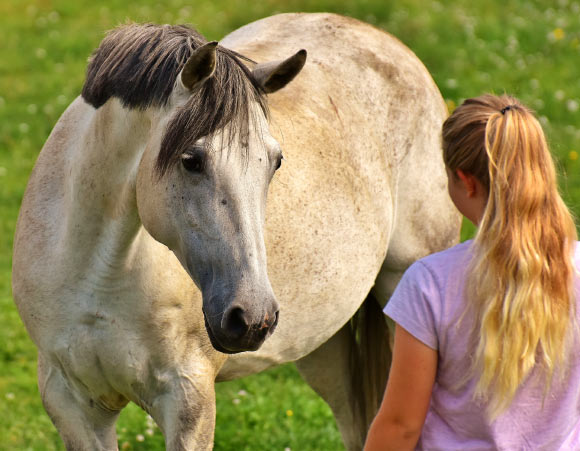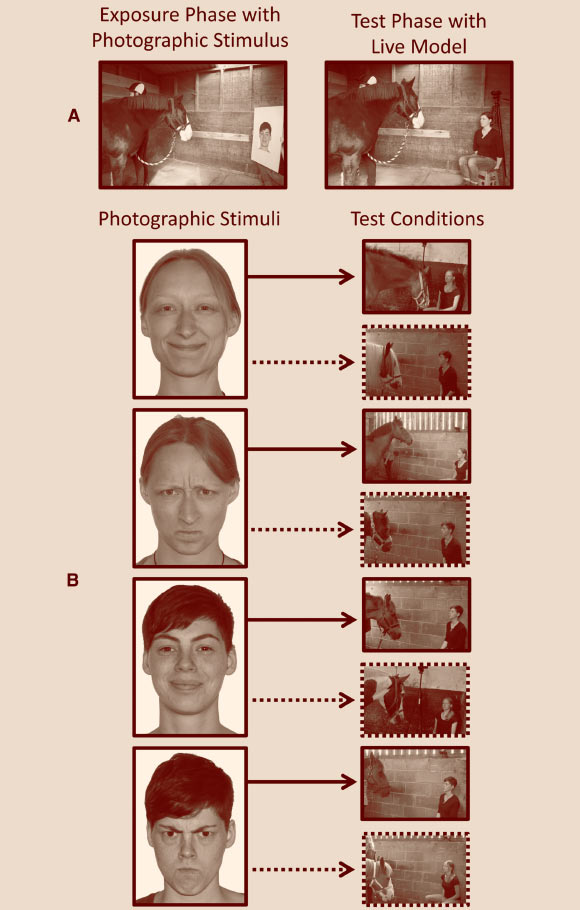According to a new study published in the journal Current Biology, domestic horses can read and then remember people’s emotional expressions, enabling them to use this information to identify people who could pose a potential threat.

According to Proops et al, some non-human animals can effectively eavesdrop on the emotional state cues that humans reveal on a moment-to-moment basis, using their memory of these to guide future interactions with particular individuals. Image credit: Alexandra / Alexas Fotos.
“What we’ve found is that horses can not only read human facial expressions but they can also remember a person’s previous emotional state when they meet them later that day — and, crucially, that they adapt their behavior accordingly. Essentially horses have a memory for emotion,” said co-lead author Professor Karen McComb, from the University of Sussex, UK.
Professor McComb and co-authors conducted controlled experiments in which domestic horses were presented with a photograph of an angry or happy human face and several hours later saw the actual person who had exhibited the expression, now in an emotionally neutral state.
This short-term exposure to the photograph of a person’s facial expression was enough to generate clear differences in subsequent responses upon meeting that individual in the flesh later the same day.
The researchers found that despite the humans being in a neutral state during the live meeting, the horses’ gaze direction revealed that they perceived the person more negatively if they had previously seen them looking angry in the photograph rather than happy.

Diagram of the experimental design and setup: (A) images of the experimental setup in exposure phase (left) and test phase (right); (B) photographic stimuli presented in the exposure phase in relation to the permutations of the test phase; in the exposure phase, each horse was presented with a photograph of model A or model B either happy or angry; in the test phase, subjects in the experimental group were presented with the live model previously depicted in the photograph, but this time adopting a neutral expression; subjects in the mismatch control group viewed the previously unseen model adopting a neutral expression; the solid border around the images of the test phase denotes the experimental group, and the dashed border denotes the mismatch control group; both models were blind to the original condition (happy or angry); the presentation duration, stimulus movement, and post-test period were the same in both presentation and exposure phases. Image credit: Proops et al, doi: 10.1016/j.cub.2018.03.035.
Previous research has shown that animals tend to view negative events with their left eye due to the right brain hemisphere’s specialization for processing threatening stimuli — information from the left eye is processed in the right hemisphere.
Importantly, in the current experiment the humans did not know which photographs the horses had previously seen, to avoid any risk of behaving differently themselves.
Also the differences in reaction only applied to the person the horses had actually seen in the photograph and were not given to a different person.
“We know that horses are socially intelligent animals, but this is the first time any mammal has been shown to have this particular ability,” said co-lead author Dr. Leanne Proops, from the University of Portsmouth, UK.
“What’s very striking is that this happened after just briefly viewing a photograph of the person with a particular emotional expression — they did not have a strongly positive or negative experience with the person.”
_____
Leanne Proops et al. Animals Remember Previous Facial Expressions that Specific Humans Have Exhibited. Current Biology, published online April 26, 2018; doi: 10.1016/j.cub.2018.03.035







